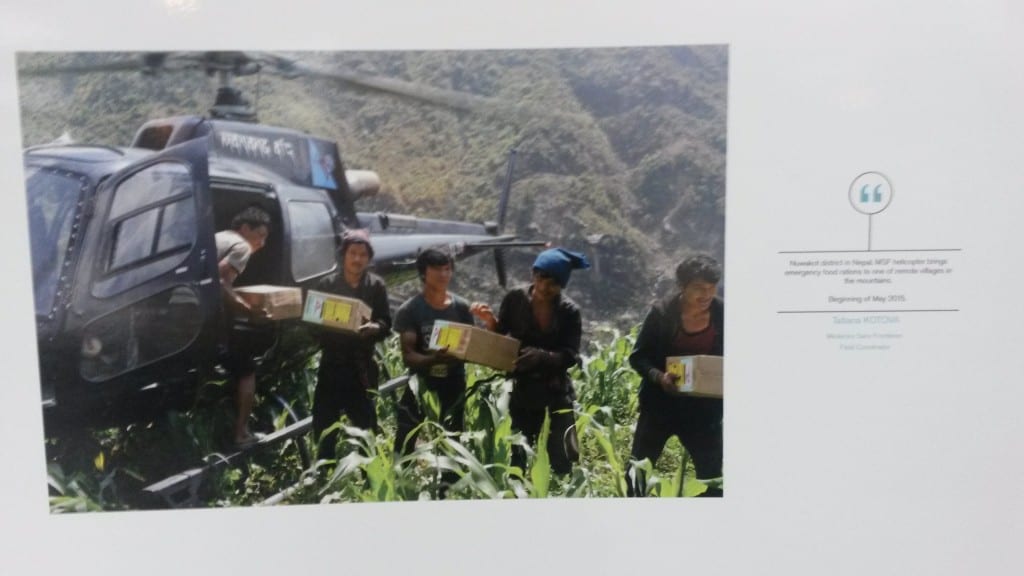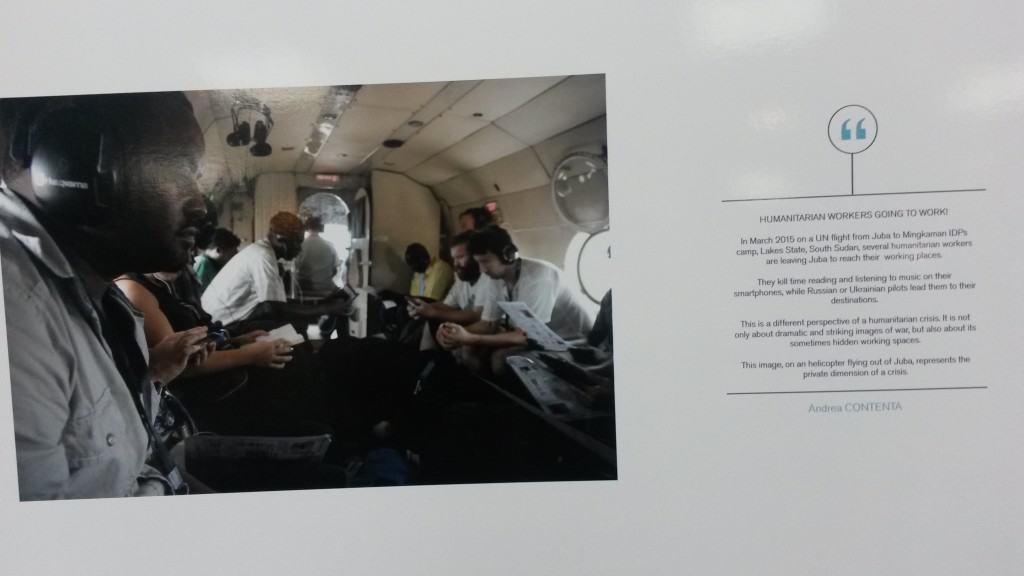Yesterday saw the launch of three reports on humanitarian practice in Nairobi, and also saw me presenting on a panel for one of the reports. The panel was organised by the CHS (Core Humanitarian Standard) Alliance, a network of around 260 humanitarian organisations operating in 160 countries worldwide. Its work focuses on ensuring the core humanitarian standards – nine commitments on quality and accountability – are mainstreamed throughout all humanitarian operations.

The CHS Alliance’s Humanitarian Accountability Report is entitled On the Road to Istanbul: How can the World Humanitarian Summit make humanitarian response more effective? In its 13 chapters, written by different experts from the humanitarian sector, 5 key themes are addressed, which the panel members, including myself, spoke to in our different capacities:
- the role of principled humanitarian response in building trust and facilitating access
- how standards can drive appropriate, effective and timely aid
- strengthening national capacities in aid delivery
- collective accountability and transparent decision making
- good people management practices
This report launch coincided with two others – ALNAP’s State of the Humanitarian System report 2015 and Quality and Accountability Initiatives by the Inter-Agency Working Group on Disaster Preparedness in East and Central Africa. Whilst the content of these reports and the presentations given by the different speakers at yesterday’s event are all very relevant to the debates around improving humanitarian effectiveness, I will only touch here on the issue which concerns me most within my own area of interest – staff welfare. This was what I was discussing on the panel in the morning, and is an issue which was hotly debated on the margins of the global consultations for the World Humanitarian Summit happening in May 2016.
Sadly, I did not see these debates being addressed or given much attention in yesterday’s event, which was attended by around 80 regional and country directors and managers from various aid agencies, including UNOCHA, World Vision, Save the Children, Oxfam, Action Aid, Red Cross and Danish Refugee Council. The tendency of staff security, safety and welfare to be sidelined by what are seen as the bigger priorities of meeting the growing needs of populations living in crisis situations is nothing new. And certainly given the reality of today’s world crises and conflicts – creating higher numbers of refugees and populations in need of assistance – it is no surprise that humanitarian decision makers find it hard to consider their own health when having to make what often amount to life or death decisions affecting thousands of people.
Yet one issue highlighted in the ALNAP report on the State of the Humanitarian System – the threefold increase in attacks on humanitarian workers since 2002 – demonstrate the huge risks, and the implications of these risks, for people working in emergency settings. In 2013, 151 humanitarian workers were killed, 171 wounded and 134 kidnapped. The majority of these were national aid workers, operating in their own countries. The increase in attacks are partly down to the changing nature of global conflict, with humanitarian workers now often being specifically targeted by non-state actors and armed groups. But as we’ve seen with the case of the MSF hospital blown up in Kunduz, Afghanistan, Western states are also responsible for flouting the laws governing armed conflict, directly affecting those engaged in humanitarian operations.

As security risks to humanitarian workers are on the increase, so too is the likelihood of chronic forms of stress, such as post-traumatic stress disorder, for those working in the midst of crisis. My presentation at the CHS Alliance report launch highlighted two distinct issues arising from this reality, to be considered by humanitarian organisations. One was the need for organisations to understand the different cultural interpretations and ways of dealing with stress. Staff welfare strategies, in terms of addressing problems such as stress, burnout or post-traumatic stress disorder, must acknowledge the diversity of the sector if they are to be effective. What is seen as stressful or traumatic for a white expat worker may be very different from what a Kenyan worker feels and experiences for instance. From the data I’ve collected so far in my research I’ve found that addressing the mental and physical health needs of national humanitarian staff is a major challenge. This is partly to do with inadequate support structures that privilege the expat staff, and partly to do with the very different cultural understandings of how personal emotional difficulties are talked about and dealt with. One important way of addressing this is to consider the right language to be used for addressing these difficulties. Trauma, for instance, or the more general term ‘mental health’ are still stigmatised words, not only in Kenya but in many other contexts.
Another issue I touched on in the panel discussion is related to the structures and culture of aid organisations. Some people, particularly national aid workers, have told me that there is a resistance to openly discussing vulnerabilities or difficulties in coping because people fear losing their job. This macho culture of working long hours, not really looking after yourself and not admitting that you’re not coping is so common in this sector and having the right support mechanisms in place is not enough to change this.
Instead, both managers and staff need to be asking themselves, how can they break down the stigmatisation around seeking help? How can they open up the space to allow for people to share their vulnerabilities and their personal insecurities? A major element that drives humanitarian work is compassion – compassion for the community in crisis. That same compassion can be lost when it comes to individual staff members looking after themselves or their colleagues. So a change in culture means cultivating an environment where staff can reflect on their emotional challenges and those of their colleagues, where they can realise they are not alone in the difficulties they face with this work, and where their personal problems are met with sensitivity and understanding.
These issues are of the utmost importance to people working in the humanitarian sector, as evidenced in various online discussions happening at the moment in the run-up to the World Humanitarian Summit next year. Yet so far there has been little recognition of the centrality of staff wellbeing to improving humanitarian practice; hence why it is not seen as a key theme to be addressed at the World Humanitarian Summit nor as an issue to be followed up in discussions such as those taking place in yesterday’s report launches in Nairobi. This is not to say that individuals, including those in the conference room yesterday, are not concerned about staff welfare. But addressing this part of humanitarian work remains far down the agenda of most aid organisations, and even more so for the donor agencies supporting those organisations. Humanitarian workers must continue to push the agenda of staff welfare within their organisations, and also at the World Humanitarian Summit in 2016. It should be an essential component in understanding how to make humanitarian action more effective and sustainable.